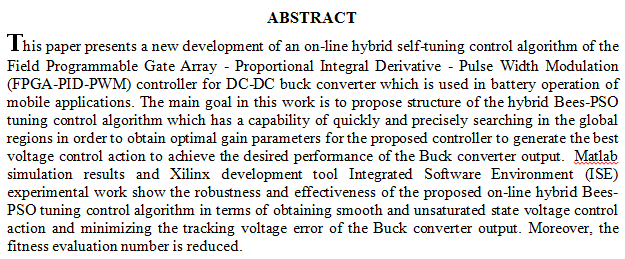
ABSTRACT : Bacillus cereus and Pseudomonas aeruginosa is the ability to produce a wide antimicrobial active compounds (Bacillin and S-Pyocin) against pathogenic microorganism. In vitro assay with the antagonists of both crude bacteriocin and partial by precipitation 75% ammonium sulfate showed that the effectively inhibited growth of the following (Candida kefyer and Fusarium spp) and Propionibacterium acnes. The results showed the inhibition zone of reached Bacillin (9-13 mm), while Pyocin (13 - 16mm) in solid medium.
 (9)
(9)
This study is pointed out to estimate the effectiveness of two solvents in the extraction and evaluating the active ingredients and their antioxidant activity as well as anti-cancer efficiency. Therefore, residues from four different Brassica vegetables viz. broccoli, Brussels sprout, cauliflower, and red cherry radish were extracted using two procedures methods: methanolic and water crude extracts. Methanol extracts showed the highest content of total phenolic (TP), total flavonoids (TF), and total tannins (TT) for broccoli and Brussels sprouts residues. Methanolic extract of broccoli and Brussels sprouts residues showed the highest DPPH· scavenging activity (IC50 = 15.39 and 18.64 µg/ml). The methanol and water ex
... Show More (11)
(11)
 (4)
(4)
Background: The anticancer impact of Epigallocatechin gallate (EGCG) the highly active polyphenol of green tea was abundantly studied. Though, the exact mechanism of its cytotoxicity is still under investigation. Objectives: Hence, the current study designed to investigate the molecular target of EGCG in HepG2 cells on thirteen autophagy- and/or apoptosis- related genes. Methods: The apoptosis detection analyses such as flow cytometry and dual apoptosis assay were used. The genes expression profile was explored by the real-time quantitative-PCR. Results: EGCG increases G0/G1 cell cycle arrest and the real-time apoptosis markers proteins leading to stimulate apoptos
... Show More (1)
(1)
 (1)
(1)
The present work investigates the effect of magneto – hydrodynamic (MHD) laminar natural convection flow on a vertical cylinder in presence of heat generation and radiation. The governing equations which used are Continuity, Momentum and Energy equations. These equations are transformed to dimensionless equations using Vorticity-Stream Function method and the resulting nonlinear system
of partial differential equations are then solved numerically using finite difference approximation. A thermal boundary condition of a constant wall temperature is considered. A computer program (Fortran 90) was built to calculate the rate of heat transfer in terms of local Nusselt number, total mean Nusselt number, velocity distribution as well as te
Pharmaceuticals have been widely remaining contaminants in wastewater, and diclofenac is the most common pharmaceutical pollutant. Therefore, the removal of diclofenac from aqueous solutions using activated carbon produced by pyrocarbonic acid and microwaves was investigated in this research. Apricot seed powder and pyrophosphoric acid (45 wt%) were selected as raw material and activator respectively, and microwave irradiation technique was used to prepare the activated carbon. The raw material was impregnated in pyrophosphoric acid at 80◦C with an impregnation ratio of 1: 3 (apricot seeds to phosphoric acid), the impregnation time was 4 h, whereas the power of the microwave was 700 watts with a radiation time of 20 min. A series o
... Show More (16)
(16)
The current study included the isolation, purification and cultivation of blue-green alga Oscillatoria pseudogeminata G.Schmidle from soil using the BG-11liquid culture medium for 60 days of cultivation. The growth constant (k) and generation time (G) were measured which (K=0.144) and (G=2.09 days).
Microcystins were purified and determined qualitatively and quantitatively from this alga by using the technique of enzyme linked immunosorbent assay (Elisa Kits). The alga showed the ability to produce microcystins in concentration reached 1.47 µg/L for each 50 mg DW. Tomato plants (Lycopersicon esculentum) aged two months were irrigated with three concentrations of purified microcystins 0.5 , 3.0 and 6.0
... Show More (3)
(3)
 (1)
(1)
In the present study, activated carbon supported metal oxides was prepared for thiophene removal from model fuel (Thiophene in n-hexane) using adsorptive desulfurization technique. Commercial activated carbon was loaded individually with copper oxide in the form of Cu2O/AC. A comparison of the kinetic and isotherm models of the sorption of thiophene from model fuel was made at different operating conditions including adsorbent dose, initial thiophene concentration and contact time. Various adsorption rate constants and isotherm parameters were calculated. Results indicated that the desulfurization was enhanced when copper was loaded onto activated carbon surface. The highest desulfurization percent for Cu2O/AC and o
... Show MoreProduction and characterization of methionine γ- lyase from Pseudomonas putida and its effect on cancer cell lines
This work introduces a new electrode geometry for making holes with high aspect ratios on AISI 304 using an electrical discharge drilling (EDD) process. In addition to commercially available cylindrical hollow electrodes, an elliptical electrode geometry has been designed, manufactured, and implemented. The principal aim was to improve the removal of debris formed during the erosion process that adversely affects the aspect ratio, dimensional accuracy, and surface integrity. The results were compared and discussed to evaluate the effectiveness of electrode geometry on the machining performance of EDD process with respect to the material removal rate (MRR,) the electrode wear rate (EWR), and the tool wear ratio (TWR). Dimensional features an
... Show More (7)
(7)
 (2)
(2)
Exploring the antibacterial potential of neem oil (Azadirachta indica) in combination with gentamicin (GEN) against pathogenic molds, especially Pseudomonas aeruginosa, has drawn concern due to the quest for natural treatment options against incurable diseases. Prospective research directions include looking for natural cures for many of the currently incurable diseases available now. microbial identification system, were used to identify the isolates. The research utilized a range of methods, such as the diffusion agar well (AWD) assays, TEM (transmission electron microscopy) analysis, minimum inhibitory concentration (MIC) assays, and real-time PCR (RT-qPCR) to analyze bacterial expression and the antibacterial action of neem oil (Azadira
... Show More (6)
(6)
 (8)
(8)
